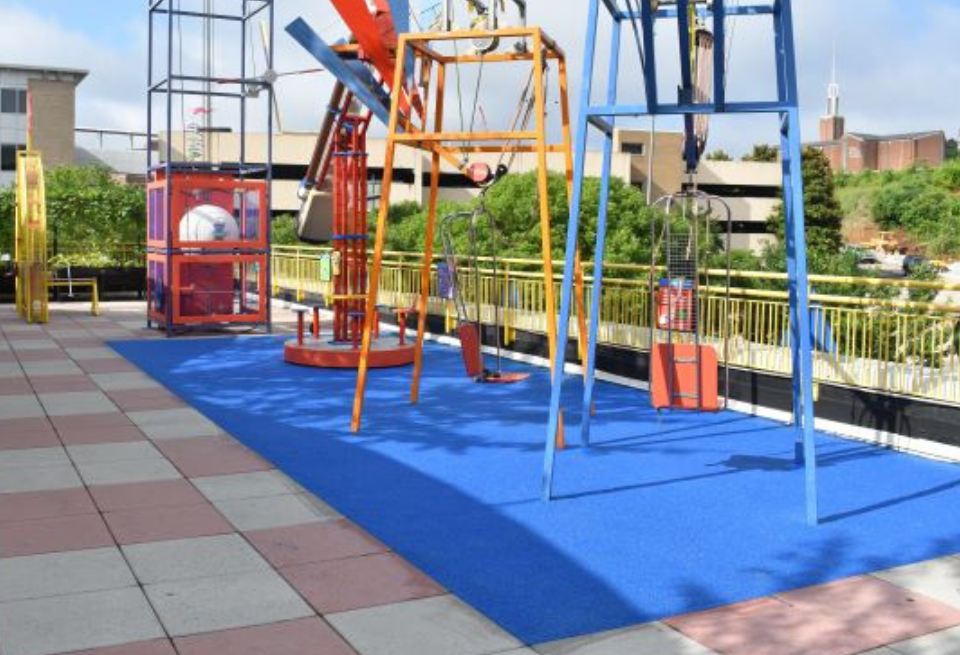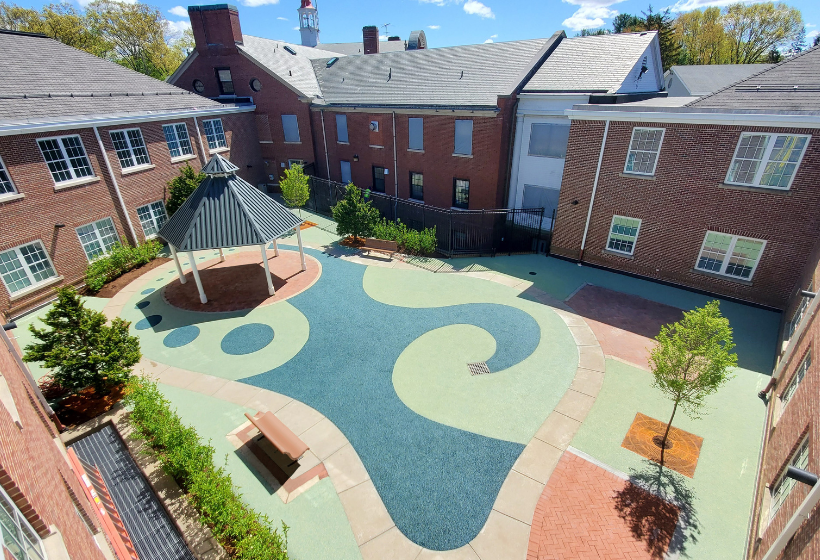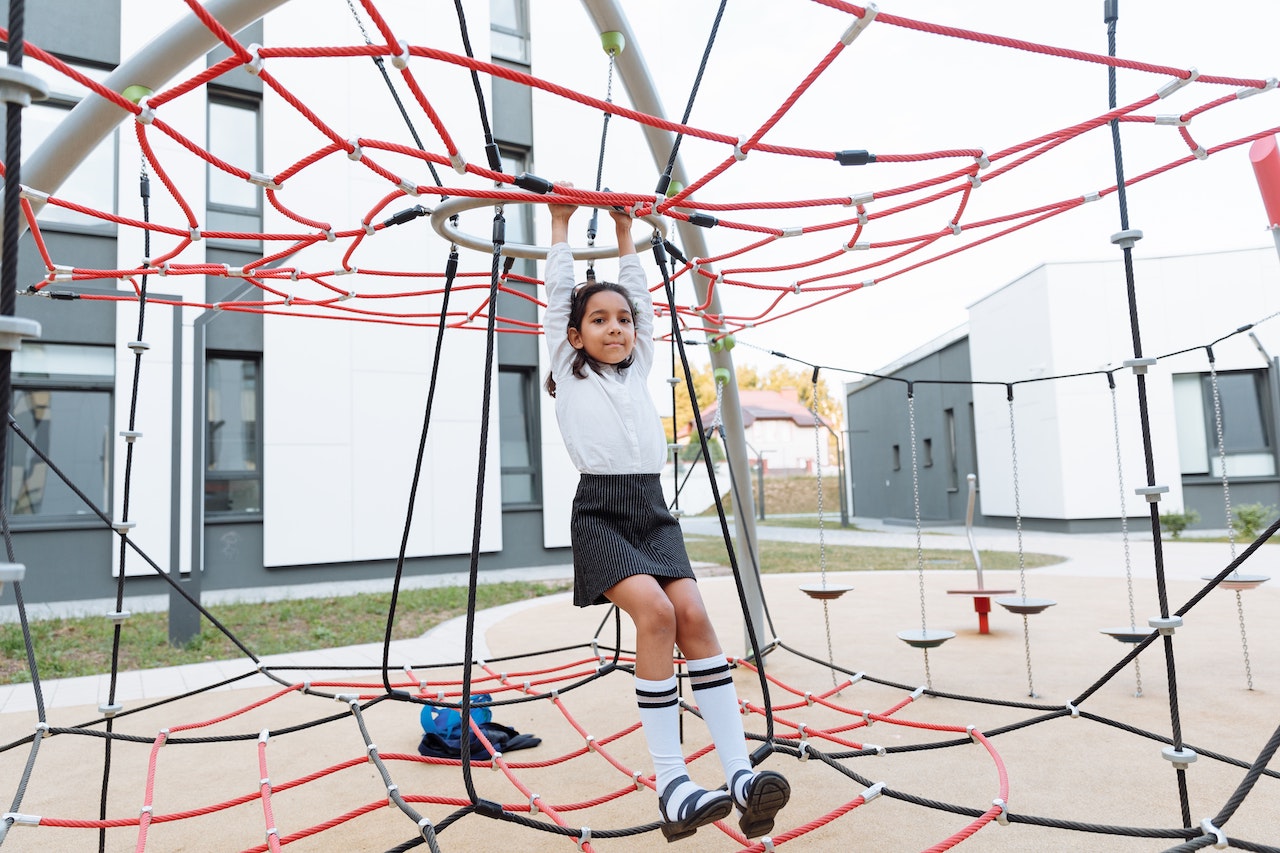Playgrounds are meant to be spaces where children of all ages, backgrounds and abilities can connect with their peers. Whether they are playing a game of hide and seek, or creating an imaginary world with the playscape as a backdrop, all children should have the opportunity to play on the playground — which is why building an ADA playground is so important.
An ADA playground is an inclusive playground that includes equipment and specifications that accommodate children of all abilities, including those who utilize wheelchairs and other mobility devices. The demand for inclusive playgrounds has never been higher, so now is the best time to learn how to build an ADA-compliant playground.
Understanding ADA Requirements for Playgrounds
The Americans with Disabilities Act, or ADA, was signed into law in 1990, and since then, accessibility for all individuals has become the norm in our country. Nearly 20 years after the ADA act was signed, the 2010 ADA Standards for Accessible Design were drafted, and now, playground designers must make a conscious effort to create accessible and inclusive playgrounds in order to give all children equal opportunity to play and interact with their peers.
According to the National Program for Playground Safety, an ADA playground is one that:
- Offers an accessible pathway from the parking lot to the playground.
- Includes an accessible pathway or playground ramp from the entrance of the playground to the play equipment.
- Includes ADA-compliant playground surfacing.
Other factors to keep in mind when constructing an ADA playground include:
- Incorporating accessible play equipment into the structure.
- Designing the playground so that there is enough room for anyone with a mobility device to clear or maneuver through the equipment.
- Adding signage to explain the accessible features.
The 2010 ADA Standards for Accessible Design are more than just recommendations — they are compliance standards that can be enforced by law. It is necessary to be familiar with these standards and to accommodate them as you create your ADA playground.
Planning and Design
Throughout the planning and design process, ADA standards and regulations should be a top priority. For example, you will need to:
- Perform a site assessment and evaluate the existing space. You should verify that you have enough space to build an inclusive, accessible playground.
- Be thoughtful and creative during the design process. In addition to including requirements, such as a playground ramp, you also will want to incorporate inclusive play elements and sensory-rich experiences.
- Incorporate universal design principles into your playground, which include creating a playground that offers equitable use, flexibility in use, simple and intuitive use, perceptible information, tolerance for error, low physical effort and size and space for approach and use.
Selecting Accessible Play Equipment
As you begin to design your ADA playground, you will find that there are many types of accessible playground equipment available. It's important to select equipment that:
- Offers a variety of sensory experiences for all children.
- Provides children of all abilities and needs with opportunities to play and socialize.
- Allows children of all abilities and needs to easily maneuver through the playground.
As you choose equipment, you will want to ensure that all equipment offers proper ground-level access and is appropriately spaced so that wheelchairs and other mobility devices can clear the spaces.
The increasing demand for accessible playgrounds has sparked the imagination of playground equipment designers, and now there are more options than ever before, allowing you to create a truly one-of-a kind ADA playground.
Surfacing and Pathways
Playground surfacing is one of the most important components of an ADA playground. Not only will you have to keep in mind the same fall height requirements and surfacing depth as any other playground, but you also will have to choose surfacing that is easy for all children to maneuver, even if they are using mobility assistance devices.
Some of the best accessible playground surfaces include:
- Poured-in-place Rubber — This is a smooth, stationary surface that will provide all playground users with a safe and consistent experience. It's also one of the longest-lasting, most durable surfacing solutions, making it an excellent choice for your ADA playground.
- Engineered Wood Fiber — This sustainable surfacing solution is a favorite among playground designers who want to choose a surface that is comfortable, convenient and easy to maintain yet also firm enough to accommodate wheelchairs and other mobility devices.
- Rubber Tiles — This surfacing solution is an affordable and sustainable choice, allowing you to create a weather-resistant, firm surface for anyone who wants to use your playground.
In addition to choosing the right surfacing for the playground itself, you also will want to design a pathway that is easy to navigate. Knowing the ramp specifications for your playground will allow you to create a safe, enjoyable and accessible playground for everyone.
Construction and Installation
Once you have designed your ADA playground and chosen the inviting equipment that will delight children of all ages and abilities, it's time to begin the construction and installation process. In order to ensure a smooth installation, you will want to focus on:
- Hiring experienced contractors. Working with reputable local contractors who are familiar with playground installation processes will allow you to move forward on your project with confidence. It is best to select contractors who are familiar with ADA standards and guidelines, as this will ensure that all specifications are adhered to throughout the installation.
- Completing regular inspections throughout the installation and prioritizing quality control. By inspecting the installation at critical points, and ensuring that all guidelines and standards are being adhered to, you will feel confident knowing that the finished playground will be ready for use as soon as the installation is complete.
Remember that ADA standards are not suggestions or guidelines. These are laws that must be adhered to in order to ensure that all children, regardless of their age or ability, have equal opportunities to stay active, play with their friends, have fun and make memories.
Maintenance and Upkeep
Once your sparkling new ADA playground is installed and ready for use, you can keep it in pristine condition for years to come by prioritizing maintenance and upkeep.
The best way to ensure that your playground stays in its best shape is to establish a regular maintenance schedule, which should include routine inspections for wear and tear multiple times per year. If an inspection reveals that a repair is necessary, you will need to address it promptly. This is the only way to ensure that your playground will remain in compliance with all ADA guidelines and standards.
The community that you serve will appreciate the fact that you not only built and developed a playground with all children in mind, but that you are also protecting it and preserving it for the years to come.
Questions About ADA-Compliant Safety Surfacing?
The playground safety surfacing that you choose will have a significant impact on the overall success of your project, particularly if you are building an ADA playground with a playground ramp. At Fibar, we have been the leading playground surfacing supplier for more than 25 years, and we can provide you with customized solutions that will allow you to build a safe, inclusive and enjoyable playground for all children.
For more information about the best ADA playground surfacing, contact us today and receive your free quote.




%20edit.jpg)
